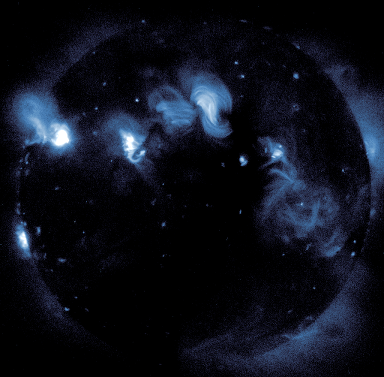
Click for movie. Also available on YouTube.
Coldest Solar Corona Since 2009
|
March has been the coolest month on the Sun since 2009. Decreased solar activity coupled with large extended coronal holes has left the solar atmosphere the coolest it's been in almost a decade. The decrease in temperature is caused by a significant drop in the number and size of active regions emerging on the disk over the last few months. The X-ray Telescope images some of the hottest plasmas in the solar corona. Two years ago, XRT was taking 4-6 sec exposures to capture quiet Sun features. Currently, XRT takes between 16s-32s exposures and barely resolves quiet Sun features. The thin_Be filter is one of several filters XRT uses to diagnose plasma temperatures. A decrease in the amount of X-ray's observed in this filter means the solar corona is getting cooler. The solar corona should continue to cool down over the next few years. Eventually, the next solar cycle will begin and solar activity will increase. Right now, these conditions offer solar scientists a short window to study solar phenomena that are difficult to observe in more extreme conditions. The smaller active regions produce less intense solar flares that are easier to observe. The large extended polar coronal holes that are common now will disappear when active region emergence disappears.
Keywords: Coronal Hole, Full Disk, Solar Cycle
|
(Prepared by Patricia Jibben)
| Back | Archive | Next |